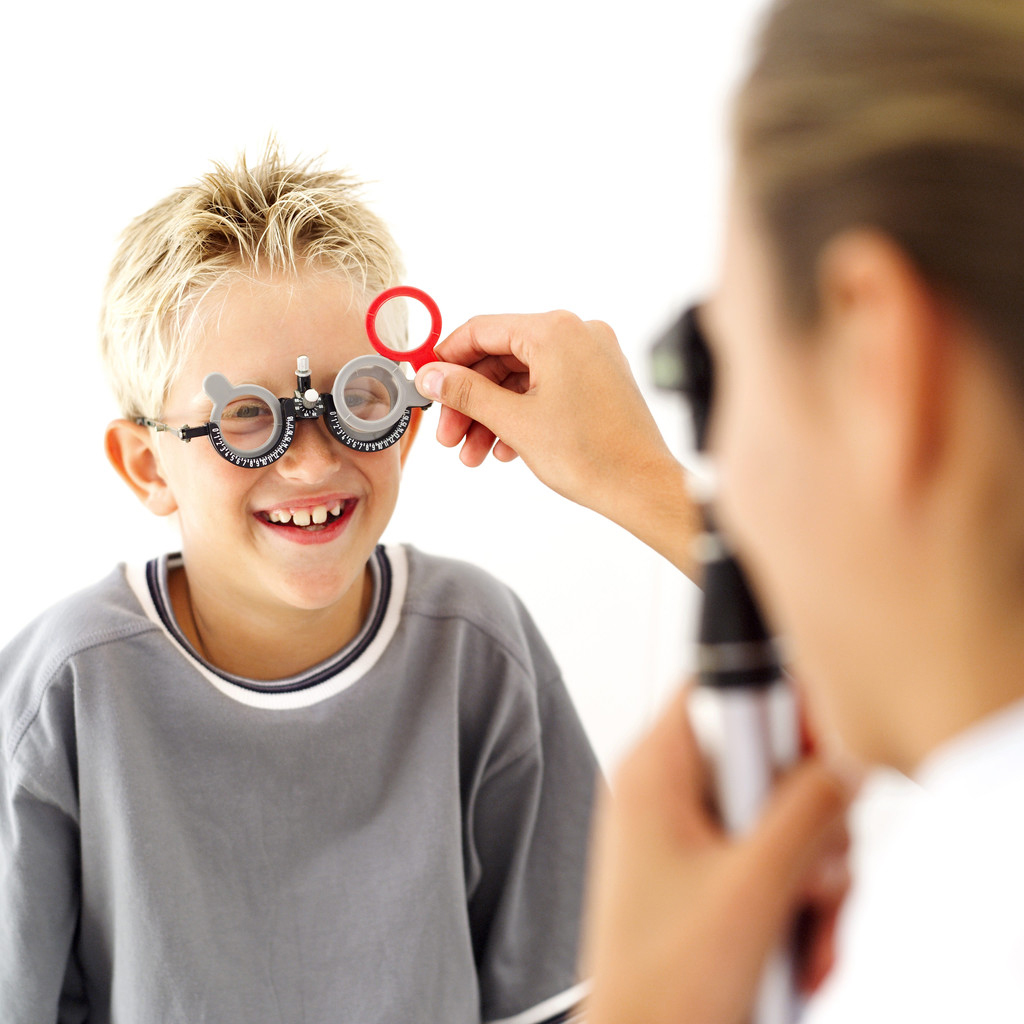When Thinking about Your Child’s Health, Don’t Forget about Their Eyes

February 7, 2017
by Mankato Clinic
Your child is constantly growing and changing right before your eyes, and their vision develops and changes just as quickly.
From the moment your child is brought into the world, the development of vision begins and their sharpness of vision is less than fully developed. You may notice that your baby prefers looking at close objects and gravitates to faces and objects that are brightly colored or of high contrast and moving.
By three months old, most babies can easily follow a moving object and can hold their eyes on it even when the object stops. Baby mobiles in cribs stimulate their visual development by having colors, details and moving parts.
From ages three to six months, the retina of a baby’s eye is well developed and small details are able to be seen. Your child is able to look from near to far and back to near again. At the same time, depth perception is also being developed.
At six months, the eye has reached nearly two thirds of its adult size. By now, both of your baby’s eyes are working together and distance vision and depth perception continue to improve.
By the time your child has his or her first momentous birthday, their vision is on its way to full development. You’ll notice that your child has coordination of the hands and eyes, which can be enhanced by games involving grasping, tossing, pointing, placing and catching.
From ages two to five years old, your preschooler is actively engaging in drawing and looking at pictures, both of which captivate and help harmonize vision and hearing.
Just like well-child visits to their pediatricians, healthy eyes and vision checks are a critical part of kids’ development. Whether or not your child has risk factors or a family history of eye problems, children should have their vision checked at their six month and three-year well-child exams and before first grade.
Vision problems tend to show up during the preschool years and can be detected during a routine eye exam. The most common eye problems in children include:
- Amblyopia: Also known as a lazy eye, amblyopia is poor vision in an eye that appears to be normal. If left untreated in childhood, a lazy eye can lead to impairment in the affected eye or permanent vision loss.
- Strabismus: Commonly known as cross-eyed, strabismus is a misalignment of the eyes, which causes eyes to wander. This leads to both eyes not aiming at the same object. If one eye is constantly misaligned, a lazy eye could develop in that eye. Healthy vision can be restored by covering the eye with a patch, which forces the misaligned eye to become stronger by working harder. In some cases, surgery or specially designed glasses may also help.
- Refractive errors: Just like in adults, these common eye problems occur when vision is blurry and the eye is incorrectly shaped. Errors include nearsightedness (inability to clearly see in the distance), farsightedness (inability to see up-close) and astigmatism (an abnormal curve of the surface of the eye). Each of these refractive errors can be treated by glasses.
So, how do you know if your child is having vision problems? Look for the following problems in children younger than six:
- Constant eye rubbing
- Extreme light sensitivity
- Squinting
- Poor focusing
- Poor visual tracking
- Abnormal alignment or movement of the eyes
- Chronic redness or tearing of the eyes
- A white pupil instead of black
In school-aged children, other signs to watch for include:
- Poor school performance
- Not wanting to go to school
- Difficulty paying attention
- Difficulty when reading and writing
- Trouble seeing information on the white board at school
- Blurry or double vision
- Squinting
- Headaches or eye pain
- Taking longer than normal to complete homework
If an ophthalmologist or optometrist determines that your child needs glasses, keep these tips in mind: younger kids should have plastic frames for safety, and all children should wear lenses made of impact-resistance plastic. To help your child ease into the transition of wearing glasses, let them choose their own frames, if possible.
With so much of the world to see and learn about, it’s important to take the necessary steps when it comes to protecting your child’s vision. Kids’ eye exams are an incredibly powerful tool for overall health and can help shape their future by catching any eye problems as soon as possible.